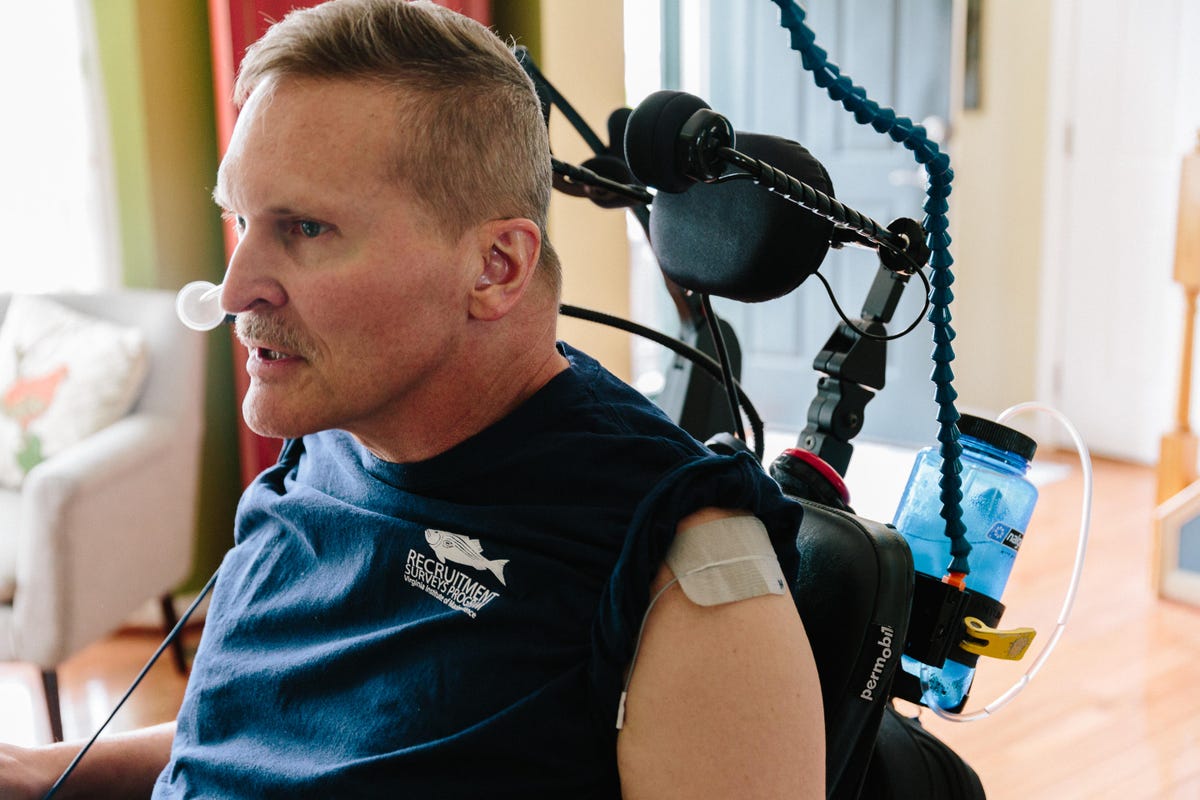The smart home tech one injured veteran uses every single day
Retired US Army Col. Phil Swinford has used a wheelchair since 2015. This technology makes his life easier.

Meet Retired US Army Col. Phil Swinford.
A 2015 mountain biking accident injured his spine, leading to incomplete, or partial, quadriplegia.
Incomplete quadriplegia means Phil still has some movement, especially in his fingers, hands and arms, but also relies on a wheelchair and various smart home technologies to perform daily tasks.
Phil and his wife, Pam, live in the Virginia suburbs.
You wouldn't know it when you walk in the front door, but there's smart home technology everywhere, powered by Control4.
Phil uses Alexa voice commands via this Amazon Echo Dot to adjust lights...
...fans...
...door locks and more.
He uses dictation technology to reply to emails and texts.
He regularly uses a face-tracking software called Open Sesame.
Open Sesame scans Phil's face and lets him use his nose as a cursor to make selections.
He uses the head gestures via Open Sesame to navigate around his phone.
Phil uses the gesture tech on his laptop, too.
He's into gaming.
He uses a joystick, a headset and the face-tracking technology to play games.
Currently he's showing us a military strategy game.
Another Echo Dot hangs out on Phil's desk.
Phil uses an Alexa voice command to turn on the "main lights."
He has some movement in his fingers and hands.
Here he picks out some music on his Android phone.
Their Ring doorbell sends alerts to his phone, which he can open with Open Sesame.
But, because the Ring app automatically pulls up a live video feed, it causes Open Sesame to crash and he finds it difficult to answer the door in time.
Phil also relies on technology for strength and conditioning.
One of his current goals is to walk his daughter down the aisle.
He's been practicing with physical therapists.
And has made significant progress.
These electronic stimulation bands help condition his legs for walking.
Phil's electric wheelchair is decked out with technology, too.
Employees at the Polytrauma Rehabilitation Center at the McGuire VA Hospital in Richmond, Virginia use 3D printers to rig his chair with custom tech.
Because he's so interested in new technologies and advancements in assistive technology, he's often asked to test out new things and give feedback.
Phil can use voice commands to turn on the TV, but he also has control through an app on his phone.
Phil's house wasn't designed to accommodate assistive technologies, but they've done a lot to it so it works better for him.
This lift, for instance, helps him move from his bed to the bathroom with greater ease.

